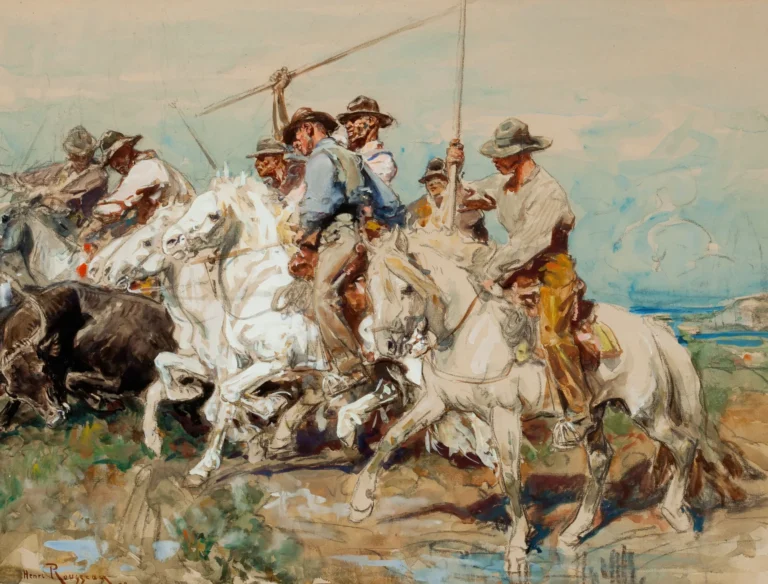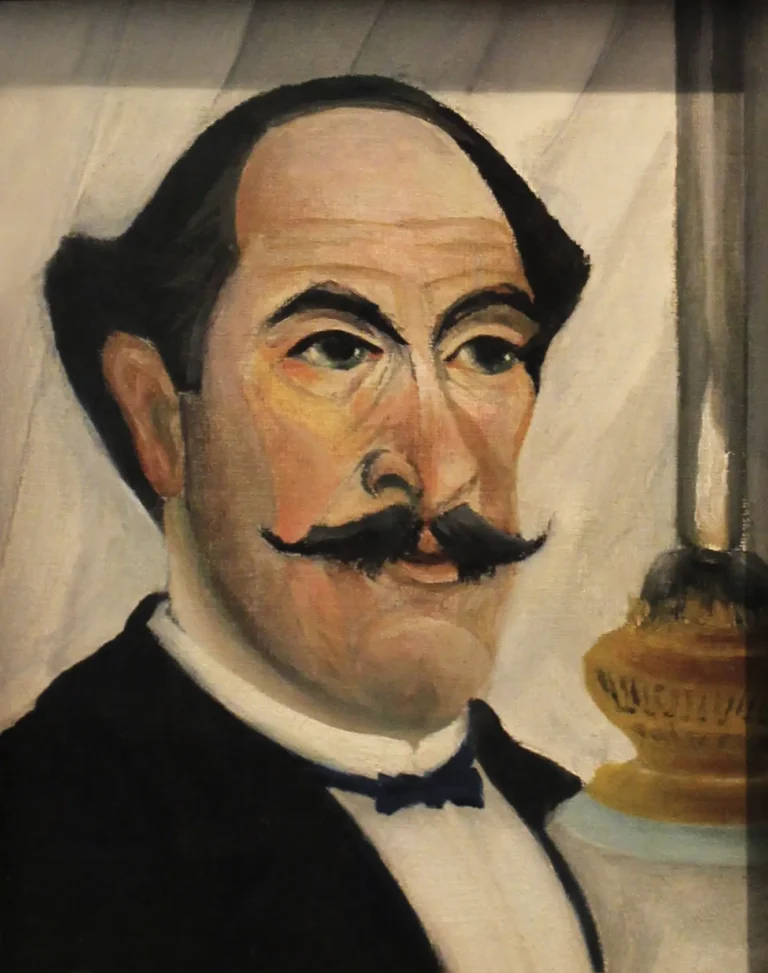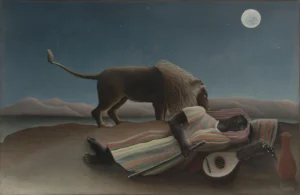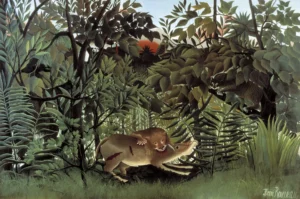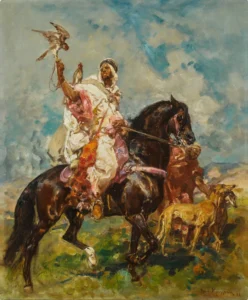Preparing for Battle (1929)
Preparing for Battle. painted by Henri Émilien Rousseau in 1929, encapsulates the artist's distinctive style as it captures a moment of military preparation, likely featuring horses and riders. This mixed media work on paper, measuring 18-1/4 by 24 inches (46.4 cm by 61.0 cm), beautifully represents the Orientalist scenes that Rousseau is celebrated for. With his signature evident, this artwork not only showcases technical skill but also cultural themes prevalent in his oeuvre.
Year 1929
About the Artwork
Henri Émilien Rousseau was inspired by the rich tapestry of cultural narratives surrounding the East, often incorporating themes of military and equine majesty into his work. Preparing for Battle stands as a testament to his fascination with the dynamic relationship between man and horse within a militaristic context. In post-World War I France, there was a surge in interest in the exotic and the historical, and Rousseau's art intersected with this cultural zeitgeist, drawing on both personal experience and the broader Orientalist movement. As he created this striking piece in 1929, Rousseau not only immortalized a moment in time but also contributed to the artistic dialogue of the era, reflecting both nostalgia and the romanticism of war.
Did You Know
Rousseau’s work is deeply rooted in the Orientalist movement, which romanticized Eastern themes and aesthetics, significantly influencing many contemporary and later artists who explored similar subjects in various mediums.
Horses frequently appeared in Rousseau’s artwork, symbolizing power, grace, and the bond between man and animal. His depictions contribute to the longstanding cultural significance of horses in art as embodiments of nobility and strength.
The military themes in Rousseau’s work reflect the historical context of his time, capturing the fascination with the military and warfare that prevailed in early 20th-century Europe, particularly following the devastation of World War I.





